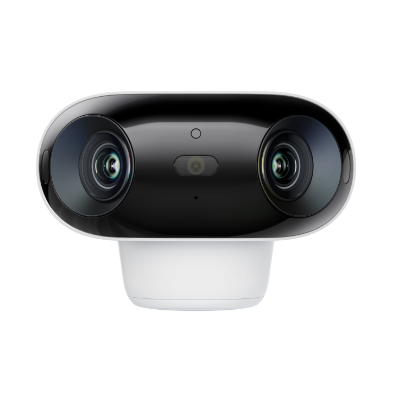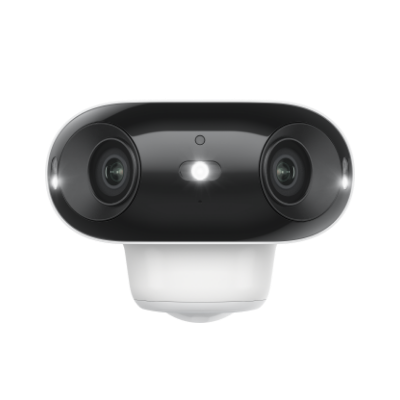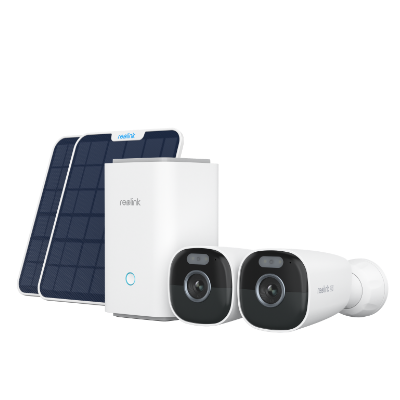How is Having a Security System for Your Home a Risk Management Strategy?

For your home, having a security system is an important risk management strategy that can help in protecting you, your family as well as your property. In this article, we will look at the meaning of risk management, the advantages of using a home security system what risks it can prevent, and how various components of a security system combine to minimize danger.
Now, let’s take a look at how is having a security system for your home a risk management strategy.
- What is a Risk Management Strategy You Could Use to Protect Your Home?
- How is Having a Security System for Your Home a Risk Management Strategy?
- Common and Possible Risks to Home Security
- How Different Components Security Systems Mitigate Risks
- Best Security Camera for Home Security Risk Management
- FAQs
- Conclusion
What is a Risk Management Strategy You Could Use to Protect Your Home?
Risk management is an elaborate process that involves the recognition, evaluation, and control of risks. This aims at reducing uncertainties and potential threats to their smallest possible levels. In relation to your home, some simple risk management strategies include; alarm systems, securing doors and windows in addition to fire extinguishers, having an emergency escape plan, etc.
A good risk management strategy for you house could be the installation of a comprehensive security system. These have a criminal deterrence effect, alert us to dangers as well as provide evidence in case of any crime that may take place. Simply put, they reduce exposure to damage or loss.
How is Having a Security System for Your Home a Risk Management Strategy?
Overall, having a security system for your home is a risk management strategy because it reduces potential threats by deterring intrusions, providing real-time alerts, and enabling quick response to emergencies. It minimizes financial risks by potentially lowering insurance costs and preventing losses from theft or property damage. Check out the reasons below:
There are several key ways a home security system serves as an effective risk management strategy:
1. Risk Identification
Security systems help identify risks through surveillance and monitoring. Sensors, cameras, and alarm panels work together to detect threats like intruders, fires, carbon monoxide, and more. Getting alerts to these dangers early allows you to take quick action.
2. Risk Assessment
High-quality security systems will analyze data to assess the severity of a threat. For example, smoke detectors discriminate between a small kitchen fire versus a raging house fire. Security cameras can use AI to distinguish expected versus unexpected motion. This assessment determines the appropriate response.
3. Risk Mitigation
Once a risk is identified, a security system mitigates the threat through deterrence, alerts, evidence, and first responder notification. Deterrence like security cameras and alarm signage prevent crimes. Alerts notify you of danger to allow an immediate response. Evidence like camera footage aids investigation. And monitoring services can dispatch police promptly based on verified threats.
4. Psychological Impact
It gives you significant satisfaction when your home is secure. Security systems make one aware of threats and give confidence in ones protection throughout the day. Instead of feeling anxious and vulnerable, you feel guarded. It has a strong psychological impact that brings comfort and assurance to you as an individual and also to your family.
5. Financial Benefits
Just avoiding a single loss occurrence like burglary fire or accident may save thousands of dollars in damages and lost properties. As far as this concern is concerned security systems provide an enormous payback on investment. In addition, monitored systems can enable you to access discounts on house insurance policies for further savings.
Common and Possible Risks to Home Security
Some of the most prevalent risks to home safety include:
- Burglary and Intrusion - Threats include break-ins, theft, and vandalism. Crime can result in stolen property, damaged locks/windows, and violation of privacy.
- Fire and Environmental Hazards - Fires, carbon monoxide, water leaks, and other environmental hazards can destroy property and threaten safety.
- Personal Safety - Crime, intruders, and accidents can present risks to your family's personal safety.
- Property Damage - Your home faces risks like extreme weather, broken pipes, appliance issues, and more which can destroy property.
How Different Components Security Systems Mitigate Risks
Security systems are comprised of various sensors, detectors, alarms, and cameras to provide complete property protection:
- Motion detectors sense unexpected movement to detect trespassers and prevent break-ins.
- Security cameras deter, record, and identify criminals if a break-in occurs.
- Smoke/CO sensors provide alerts to dangerous gases or fires so you can evacuate.
- Smart locks and entry sensors prevent unauthorized access and alert you of entries.
- Alarm systems sound sirens and alerts to prevent and stop criminal activity.
- Environmental sensors detect leaks, temperature, and humidity changes to prevent property damage.
- Panic buttons provide emergency alert capabilities for personal safety risks.
- Monitoring services dispatch emergency responders based on verified threats.
Together, these components provide robust risk management for comprehensive protection.
Best Security Camera for Home Security Risk Management
Reolink Argus 4 Series
For effective video surveillance and risk mitigation, we recommend the Reolink Argus 4 Pro security camera. This robust outdoor camera has several features that make it ideal for home security risk management. The 180° field of view provides expansive side-to-side coverage with zero blind spots, allowing comprehensive monitoring without any gaps.
The 4K UHD resolution delivers ultra-clear image quality to capture fine details like faces and license plates. Color night vision powered by ColorX technology enables the camera to provide full-color imaging day and night, ensuring visibility even in total darkness. Moreover, WiFi 6 connectivity offers fast and reliable wireless performance for smooth video streaming.
4k 180° Wire-free Color Night Vision Camera
4K UHD 180° Blindspot-free View; Color Vision Day and Night; 30% More Battery Life; Dual-band Wi-Fi 6; Smart detection.
You can also consider the Reolink Argus 4 with traditional black-and-white night vision and spotlights.
4k 180° Blindspot-free Wi-Fi 6 Camera
4K UHD 180° Blindspot-free View; Dual-band Wi-Fi 6; Smart detection; Easy Installation Anywhere
Reolink Home Hub with Argus Eco Ultra
The Reolink Home Hub with Argus Eco Ultra offers a powerful wireless security system featuring 4K Wi-Fi solar/battery standalone cameras with no monthly fees. It delivers 4K color footage both day and night, ensuring detailed monitoring in any lighting condition. With one year of local storage and exclusive anti-theft algorithms, your data remains secure without recurring costs. The system is expandable to support up to eight Reolink cameras, providing comprehensive coverage for your property.
Wireless Security System with 4K Wi-Fi Solar/Battery Standalone Camera Without Monthly Fees
4K Color Footage Day & Night, 1 Year of Local Storage, Exclusive Anti-Theft Algorithms, 360° All-Around Coverage, Expandable System Up to 8 Reolink Cams.
FAQs
Why is security a risk management?
Security is a critical part of risk management because it helps identify risks, assess their severity, and take actions to mitigate or control their impact. Effective security reduces vulnerabilities and protects people, property, and information. It provides warnings, deterrence, and responsive capabilities against threats.
What is a risk control strategy in information security?
Risk control strategies in information security involve policies, procedures, software, and hardware solutions that help avoid, reduce, or transfer cyber risks. This includes antivirus software, firewalls, access controls, encryption, user training, and disaster recovery systems. The goal is to minimize the likelihood and potential impact of data breaches, hacking, malware, and system compromise.
Conclusion
An excellent risk mitigation strategy is undertaking the installation of a home security system. In addition to preventing crime, these systems send immediate notifications, offer help during investigation processes, and prevent further damage by detecting it earlier. The elements that include cameras, alarms, monitors as well as monitoring services help to mitigate such risks as burglary, fire outbreaks, environmental disasters, and personal dangers.
Security awareness, safety, and tranquility are brought about by security systems. Kindly take your time in assessing the unique risks associated with your homes and find out how a customized security system will best manage your needs. For any other questions please feel free to leave a comment below.
Search
Subscribe for the Latest Updates
Security insights & offers right into your inbox



